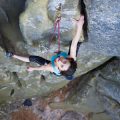Introduction to Educational Hiking Adventures
Exploring the great outdoors is more than just a fun way for kids to burn off energy—it’s a powerful tool for learning and growth. Across the United States, hiking trails designed with young explorers in mind offer unique opportunities for hands-on education. These trails weave together adventure, physical activity, and lessons about nature, inspiring children to be curious, active, and environmentally aware.
Outdoor learning helps kids develop important life skills. When they hike, they’re not just walking—they’re discovering native plants, spotting wildlife, reading trail maps, and asking questions about the world around them. This kind of real-world learning can’t always happen in a classroom. In fact, many American families are finding that time spent on educational hiking trails leads to stronger family bonds and lifelong memories.
Why Outdoor Learning Matters
| Benefit | How Hiking Trails Help Kids |
|---|---|
| Curiosity & Discovery | Kids learn by seeing, touching, and exploring natural wonders like rocks, trees, streams, and wildlife habitats. |
| Physical Activity | Hiking keeps children active, improving strength, balance, and overall health. |
| Environmental Awareness | Trails teach respect for nature—kids see firsthand why it’s important to protect our environment. |
| Critical Thinking Skills | Navigating paths and reading signs encourage problem-solving and decision-making. |
| Family Connections | Sharing outdoor adventures brings families closer together through teamwork and shared discovery. |
The Allure of U.S. Hiking Trails for Kids
The U.S. is home to countless trails that blend fun with education. From interactive signage explaining local ecosystems to ranger-led programs featuring scavenger hunts or wildlife spotting, these trails make learning an exciting part of the adventure. Whether your family prefers gentle walks through leafy forests or more challenging hikes with panoramic views, there’s a trail out there perfect for sparking your child’s love of nature—and giving them lessons that last a lifetime.
2. Trail Highlights: Unique Learning Experiences from Coast to Coast
America’s top educational hiking trails for kids are more than just paths through the woods—they’re outdoor classrooms packed with hands-on discovery, interactive activities, and plenty of adventure. From the redwoods of California to the rocky coasts of Maine, each trail offers something special that helps kids learn about nature, science, and history in a way that’s fun and memorable.
Interactive Signage and Discovery Zones
Many of these trails feature colorful signs and learning stations along the route. These displays might explain local wildlife, geology, or even share stories about Native American history. Kids can stop to answer quiz questions, solve puzzles, or touch natural objects like rocks and tree bark. Some trails even have scavenger hunts built into the hike!
What Makes These Trails Stand Out?
| Trail Feature | Description | Example Trail |
|---|---|---|
| Interactive Signage | Signs with facts, questions, or QR codes for digital content | Junior Ranger Trail, Grand Canyon National Park (AZ) |
| Discovery Zones | Hands-on learning spots to explore plants, rocks, or animal tracks | Fernbank Forest Trail, Atlanta (GA) |
| Ranger-Led Activities | Guided hikes with games, crafts, or storytelling led by park rangers | Tidepool Walks, Cabrillo National Monument (CA) |
| Nature Playgrounds | Play areas built from natural materials for climbing and exploring | Nature Play Zone, Forest Park (OR) |
| Themed Scavenger Hunts | Kid-friendly checklists to spot plants, animals, or landmarks along the trail | Billy Goat Trail Jr., Great Falls (MD) |
Blending Fun and Education on the Trail
The best educational trails don’t just teach—they invite kids to become explorers. Whether it’s looking for salamanders under logs or following a map to hidden storyboards, these experiences spark curiosity and encourage kids to ask questions. Plus, most trails are designed for all ages and abilities, so everyone can join in on the adventure.
Family-Friendly Amenities You’ll Love
- Rest stops with picnic tables: Perfect for snack breaks.
- Clever trail markers: Easy-to-follow signs keep everyone on track.
- Accessible paths: Many trails are stroller-friendly or wheelchair accessible.
- Visitor centers: Start your journey with maps and activity booklets.
- Kid-focused events: Special programs like “Junior Ranger Days” make learning extra exciting.
If you’re looking for a family outing that combines fresh air with fascinating discoveries, these educational hiking trails across the U.S. deliver an experience your kids won’t forget!

3. Wildlife and Nature Observation
Exploring nature is one of the best ways for kids to learn about the world around them. Across the U.S., there are many hiking trails where young adventurers can see wildlife, plants, and different types of ecosystems up close. These trails are not just fun—they help children become curious about science and encourage them to respect the environment.
Why Observe Wildlife and Nature on Trails?
When kids hike on educational trails, they get to spot animals in their natural habitats, look at wildflowers, and even listen to birds singing. This hands-on experience helps them understand how living things depend on each other and why it’s important to protect nature.
Top Trails for Wildlife and Nature Observation
| Trail Name | Location | What Kids Can See | Special Features |
|---|---|---|---|
| Great Swamp National Wildlife Refuge Trail | New Jersey | Turtles, frogs, deer, native birds | Boardwalks over wetlands for easy viewing |
| Everglades Anhinga Trail | Florida | Alligators, wading birds, fish | Short walk with wildlife viewing platforms |
| Lily Lake Trail – Rocky Mountain NP | Colorado | Marmots, elk, wildflowers | Paved path, mountain views |
| Muir Woods Main Trail | California | Banana slugs, owls, giant redwoods | Shaded trail through old-growth forest |
| Shelby Farms Greenline Nature Trail | Tennessee | Squirrels, butterflies, songbirds | Kid-friendly with plenty of resting spots |
Tips for Responsible Wildlife Viewing with Kids:
- Stay on marked trails: This helps protect plants and animals’ homes.
- Keep a safe distance: Use binoculars for a closer look without disturbing wildlife.
- No feeding animals: Wild animals need to eat their natural food to stay healthy.
- Be quiet and patient: Moving slowly and quietly makes it easier to spot shy creatures.
- Leave no trace: Remind kids not to pick flowers or collect rocks so everyone can enjoy nature.
Selecting trails that focus on wildlife observation gives children unforgettable experiences while teaching them how every part of nature is connected. With these trails across the country, families can create lasting memories and inspire a lifelong love for the outdoors.
4. Cultural and Historical Exploration
Hiking isn’t just about nature—its also a fantastic way for kids to discover Americas rich cultural and historical stories. Across the U.S., many trails combine outdoor fun with hands-on learning about Native American heritage, pioneer life, geology, and early American settlements. These paths often include interpretive signs, museum stops, or even reconstructed villages, making history come alive in a way that’s exciting for young explorers.
Why Choose Culturally and Historically Themed Trails?
These trails offer more than just scenic views—they help kids connect with America’s past and understand how the land has shaped its people. By walking these paths, families can explore ancient petroglyphs, old wagon roads, and stories of communities who called these places home long before us.
Top Educational Trails with Cultural and Historical Themes
| Trail Name | Location | Main Features | What Kids Can Learn |
|---|---|---|---|
| Petroglyph National Monument Trails | Albuquerque, NM | Volcanic rocks covered in Native American petroglyphs; visitor center exhibits | Native American art, symbolism, and ancient communication methods |
| Pioneer Village Trail (Conner Prairie) | Fishers, IN | Recreated 19th-century settlement; costumed interpreters; hands-on exhibits | Pioneer daily life, early American technology, and westward expansion |
| Battlefield Park Trails (Minute Man National Historical Park) | Concord & Lexington, MA | Historic battle sites; interpretive panels; visitor centers with artifacts | The American Revolution, colonial history, and local legends |
| Mesa Verde National Park Trails | Cortez, CO | Ancestral Puebloan cliff dwellings; archeological sites; guided tours | Ancient engineering, Native American culture, and community life centuries ago |
| Cades Cove Loop Trail (Great Smoky Mountains) | Tennessee/North Carolina Border | Historic cabins; churches; old mills; interpretive signs along the loop road/trail | Pioneer settlements in Appalachia and natural history of the Smokies |
Tips for an Enriching Experience:
- Check Visitor Centers: Many trails have museums or interpretive centers at the trailhead—start here to get context before hiking.
- Look for Ranger-Led Programs: Park rangers often lead family-friendly walks that include storytelling or hands-on activities.
- Bring a Journal: Encourage kids to sketch what they see or jot down interesting facts from signs or exhibits.
- Ask Questions: If you meet interpreters or guides along the trail, don’t be shy—kids can learn a lot by asking about the lives of people who once lived there.
- Museum Stops: Pair your hike with a visit to nearby museums for a deeper dive into local culture and history.
5. Tips for Hiking with Kids: Safety, Gear, and Making the Most of the Journey
Exploring America’s top educational hiking trails with your kids can be an unforgettable adventure—if you’re prepared! Here are some practical tips to help families make the most of their hikes, keep everyone safe, and turn each walk into a fun learning experience.
Safety First: Guidelines for Hiking with Children
- Stick Together: Always hike as a group and keep kids within eyesight at all times.
- Know Your Trail: Research trail difficulty, length, and conditions before heading out. Pick routes suitable for your child’s age and abilities.
- Set Clear Rules: Teach children to stay on marked trails, avoid touching unknown plants or wildlife, and what to do if they get separated (e.g., stop and wait, blow a whistle).
- Emergency Preparedness: Carry a first aid kit, know basic first aid, and teach older kids how to call 911 if needed.
Recommended Gear for Kids
| Item | Why It Matters |
|---|---|
| Comfortable Shoes | Protects feet from rocks, roots, and helps prevent blisters. |
| Sunscreen & Hat | Guards against sunburn—even on cloudy days. |
| Lightweight Backpack | Keeps water, snacks, and treasures handy without weighing kids down. |
| Reusable Water Bottle | Staying hydrated is key during any outdoor activity. |
| Whistle | A safety tool so kids can signal if they need help. |
| Weather-Appropriate Clothing | Dress in layers for changing conditions; pack rain gear if needed. |
| Bugspray/Tick Repellent | Helps protect against insects along the trail. |
Tasty Snack Ideas for Young Hikers
- Trail Mix: Nuts, dried fruit, pretzels, or chocolate chips—make your own blend!
- Sliced Apples or Oranges: Easy to eat and refreshing on hot days.
- String Cheese or Cheese Sticks: Kid-friendly protein that travels well.
- Granola Bars: Choose low-sugar options for lasting energy.
- Pretzel Sticks or Crackers: A crunchy treat that won’t get crushed easily.
- Squeeze Yogurts: Chill before you go; they’ll be cool by snack time!
Turning Hikes into Memorable Learning Adventures
Nature Scavenger Hunt
Create a simple list of things to spot along the trail—like pinecones, animal tracks, wildflowers, or different types of leaves. Give each child their own checklist or let them take photos of their finds!
Budding Scientists: Observation Journals
Packing small notebooks lets kids draw pictures of what they see or write down interesting facts. Encourage them to note animal sounds, rock colors, or weather changes as you walk.
Telling Stories on the Trail
Add a creative twist by making up stories about the plants and animals you encounter. Who lives in that hollow tree? What adventures might a squirrel have?
Pro Tip: Let Kids Lead (Sometimes!)
If the path is safe and visible, let children take turns leading the way. It builds confidence and encourages curiosity!
The right preparation makes hiking one of the best ways for families to learn together while exploring America’s incredible landscapes. With these tips in mind, your next educational hiking adventure is sure to be filled with fun discoveries and happy memories!


